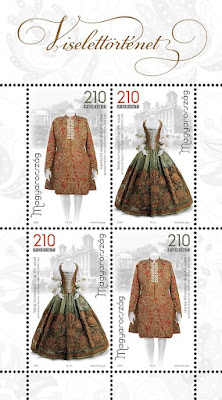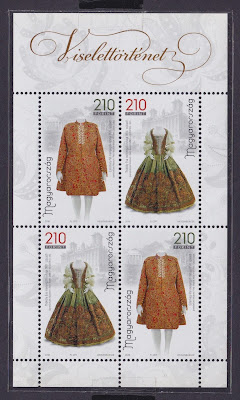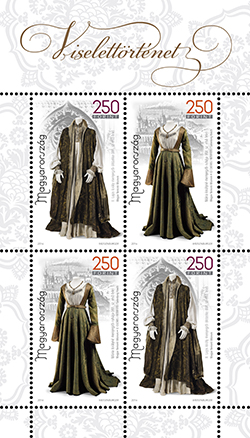Technical Details:
Date of Issue: 29 November 2013
Stamp Value: 60 sen (setenant), 80 sen (setenant)
Miniature Sheet Value: RM5.00
Stamp Size: 30mm x 48mm
Perforation: 14
Miniature Sheet Size: 85mm x 100mm
Stamp Size In Miniature Sheet: 50mm x 60mm
Sheet Content: 20 Stamps
Paper: Yellow Green Phosphor 102gsm
Printing Process: Litography
Printer: Cartor Security Printing
Stamp Designer: Reign Associates Sdn Bhd
The Baba & Nyonya Heritage
The Babas & Nyonyas referred to the descendants of late 15th to 19th century Chinese immigrants to the Malay archipelago. Baba is the address for the men, and Nyonya for the women.
The Babas & Nyonyas are partially assimilated into the Malay culture, especially in food, dress and spoken language, while retaining some of the Chinese traditions and culture such as religion, name, folk medicine and festivals.
60sen - Nyonyaware
Nyonyaware is characterized by its decorative motives and the most vivid and colourful familiar rose enamels. The stamp features a covered jar called ‘kamcheng’ – variously used as a container for water, pickles and other types of food. Also featured are ceramic spoons, plate and cups with features of phoenix and peonies – symbols of prosperity and good fortune.
60sen - Nyonya Beaded Slippers
The beaded slippers is one of the most popular Nyonya object still found today. The technique of making such footwear is also one of the few crafts leftover from the golden age of the Baba & Nyonya. The beaded slippers were either opened face or covered. The popular motives used for the pattern were flowers, birds, butterflies and fruits.
80sen - Malacca Peranakan Townhouse
The typical Baba & Nyonya townhouse features neo-classical pediments, pillars and stucco decorations over windows, combined with the local tradition of timber craftsmanship. House fronts are usually heavily decorated with brightly colored hand-painted tiles and Chinese characters painted in gold on large black backgrounds. The Baba & Nyonya Heritage Museum on Jalan Tun Tan Cheng Lock in Malacca showchases on of the most well-preserved 19th century Baba & Nyonya residence.
80sen - Baba & Nyonya Wedding Attire
The wedding costume is colourful and elaborate. The headdress worn by the bride is made out of more than a hundred gold and silver hair pins that are put into the hair to form a crown. On her chest and wrists she wears numerous jewelry and accessories. The costumes are made from damask silk and either couched with gold thread or covered with coloured thread embroidery. The groom’s jacket and hat are that of the Manchu gentry of old China. he has a traditional Chinese fan on his hand and boots as footwear.
MS RM5 - Nyonya Kebaya Embroidery
The Nyonya kebaya first appeared only in the early 20th century. The early versions features rather simple embroidery work, but later, especially from the 1960s onwards, a more exquisite and intricate embroidery began to emerge. While the early kebayas are hand sewn, the Nyonya kebaya today is embroidered using the sewing machine with flower motives being the favourite theme. The miniature sheet feature a Nyonya kebaya, which won the UNESCO Award of Excellence for Handicraft 2012. The stamp within the miniature sheet feature a composition of Malaysian fruit, with holes cut on the paper resembling the embroidery.
Date of Issue: 29 November 2013
Stamp Value: 60 sen (setenant), 80 sen (setenant)
Miniature Sheet Value: RM5.00
Stamp Size: 30mm x 48mm
Perforation: 14
Miniature Sheet Size: 85mm x 100mm
Stamp Size In Miniature Sheet: 50mm x 60mm
Sheet Content: 20 Stamps
Paper: Yellow Green Phosphor 102gsm
Printing Process: Litography
Printer: Cartor Security Printing
Stamp Designer: Reign Associates Sdn Bhd
The Baba & Nyonya Heritage
The Babas & Nyonyas referred to the descendants of late 15th to 19th century Chinese immigrants to the Malay archipelago. Baba is the address for the men, and Nyonya for the women.
The Babas & Nyonyas are partially assimilated into the Malay culture, especially in food, dress and spoken language, while retaining some of the Chinese traditions and culture such as religion, name, folk medicine and festivals.
60sen - Nyonyaware
Nyonyaware is characterized by its decorative motives and the most vivid and colourful familiar rose enamels. The stamp features a covered jar called ‘kamcheng’ – variously used as a container for water, pickles and other types of food. Also featured are ceramic spoons, plate and cups with features of phoenix and peonies – symbols of prosperity and good fortune.
60sen - Nyonya Beaded Slippers
The beaded slippers is one of the most popular Nyonya object still found today. The technique of making such footwear is also one of the few crafts leftover from the golden age of the Baba & Nyonya. The beaded slippers were either opened face or covered. The popular motives used for the pattern were flowers, birds, butterflies and fruits.
80sen - Malacca Peranakan Townhouse
The typical Baba & Nyonya townhouse features neo-classical pediments, pillars and stucco decorations over windows, combined with the local tradition of timber craftsmanship. House fronts are usually heavily decorated with brightly colored hand-painted tiles and Chinese characters painted in gold on large black backgrounds. The Baba & Nyonya Heritage Museum on Jalan Tun Tan Cheng Lock in Malacca showchases on of the most well-preserved 19th century Baba & Nyonya residence.
80sen - Baba & Nyonya Wedding Attire
The wedding costume is colourful and elaborate. The headdress worn by the bride is made out of more than a hundred gold and silver hair pins that are put into the hair to form a crown. On her chest and wrists she wears numerous jewelry and accessories. The costumes are made from damask silk and either couched with gold thread or covered with coloured thread embroidery. The groom’s jacket and hat are that of the Manchu gentry of old China. he has a traditional Chinese fan on his hand and boots as footwear.
MS RM5 - Nyonya Kebaya Embroidery
The Nyonya kebaya first appeared only in the early 20th century. The early versions features rather simple embroidery work, but later, especially from the 1960s onwards, a more exquisite and intricate embroidery began to emerge. While the early kebayas are hand sewn, the Nyonya kebaya today is embroidered using the sewing machine with flower motives being the favourite theme. The miniature sheet feature a Nyonya kebaya, which won the UNESCO Award of Excellence for Handicraft 2012. The stamp within the miniature sheet feature a composition of Malaysian fruit, with holes cut on the paper resembling the embroidery.
Technical Details:
Date of Issue: 01 December 2014
Denomination: RM 50
Stamp Size: 25 mm x 35 mm x 0.1 mm
Weight: 1.46 +/-0.05g
Metal: Copper Plated with 22 K Gold
Technique: Stamping
Special Feature: Fine and Elegant Stamping
Printing: Cartor Security Printing
Designer: Pos Malaysia Berhad
Acknowledgements: Muzium Negara, Persatuan Baba & Nyonya Kuala Lumpur, Cedric Tan, Lim Swee Kim, Baba Nyonya Heritage Museum
Date of Issue: 01 December 2014
Denomination: RM 50
Stamp Size: 25 mm x 35 mm x 0.1 mm
Weight: 1.46 +/-0.05g
Metal: Copper Plated with 22 K Gold
Technique: Stamping
Special Feature: Fine and Elegant Stamping
Printing: Cartor Security Printing
Designer: Pos Malaysia Berhad
Acknowledgements: Muzium Negara, Persatuan Baba & Nyonya Kuala Lumpur, Cedric Tan, Lim Swee Kim, Baba Nyonya Heritage Museum
Technical Details:
Date of Issue: 12 February 2015
Denomination: RM 35
Miniature Sheet Size: 85 mm x 100 mm
Stamp Size: 50 mm x 60 mm
Technique: Lithography & Embroidery
Paper: Yellow Green Phosphor 103gsm
Printing: Cartor Security Printing
Designer: Reign Associates Sdn Bhd
Acknowledgements: Persatuan Baba & Nyonya Kuala Lumpur, Cedric Tan, Lim Swee Kim
Date of Issue: 12 February 2015
Denomination: RM 35
Miniature Sheet Size: 85 mm x 100 mm
Stamp Size: 50 mm x 60 mm
Technique: Lithography & Embroidery
Paper: Yellow Green Phosphor 103gsm
Printing: Cartor Security Printing
Designer: Reign Associates Sdn Bhd
Acknowledgements: Persatuan Baba & Nyonya Kuala Lumpur, Cedric Tan, Lim Swee Kim



















